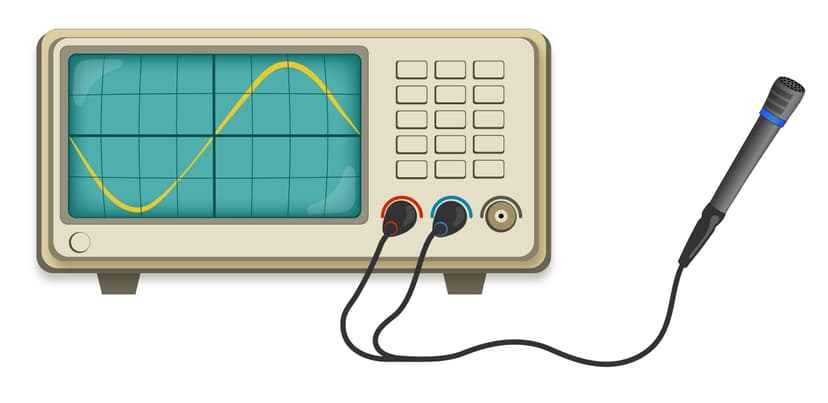Myths about teaching can hold you back
- Year 10
- OCR
- Foundation
- Year 10
- OCR
- Foundation
Oscilloscope
You can interpret and explain sound waves shown on an oscilloscope.
These resources will be removed by end of Summer Term 2025.
Switch to our new teaching resources now - designed by teachers and leading subject experts, and tested in classrooms.
These resources were created for remote use during the pandemic and are not designed for classroom teaching.
Lesson details
Key learning points
- An oscilloscope is a displacement-time graph of a wave
- Connected to a microphone, an oscilloscope shows a displacement-time graph of a sound wave
- The distance between two wave crests on an oscilloscope’s graph is equal to the period of the wave
- The time period is measured most accurately by measuring the time for, say, 10 waves and dividing time by 10
- The bigger the amplitude of a sound wave, the louder the sound
Keywords
Oscilloscope - an oscilloscope is a piece of equipment that can display a representation of a sound wave.
Displacement-time graph - a displacement-time graph shows how the displacement of one part of a wave changes as the wave moves forward.
Period - the period of a wave is the time for one complete oscillation.
Frequency - the frequency of a wave is the number of complete oscillations in one second.
Loudness - the loudness of a sound wave is a measure of how loud it is.
Common misconception
The distance between two crests of an oscilloscope graph is equal to one wavelength.
Emphasise the need to read scales of graphs first and that the horizontal scale of an oscilloscope graph is time.
To help you plan your year 10 combined science lesson on: Oscilloscope, download all teaching resources for free and adapt to suit your pupils' needs...
To help you plan your year 10 combined science lesson on: Oscilloscope, download all teaching resources for free and adapt to suit your pupils' needs.
The starter quiz will activate and check your pupils' prior knowledge, with versions available both with and without answers in PDF format.
We use learning cycles to break down learning into key concepts or ideas linked to the learning outcome. Each learning cycle features explanations with checks for understanding and practice tasks with feedback. All of this is found in our slide decks, ready for you to download and edit. The practice tasks are also available as printable worksheets and some lessons have additional materials with extra material you might need for teaching the lesson.
The assessment exit quiz will test your pupils' understanding of the key learning points.
Our video is a tool for planning, showing how other teachers might teach the lesson, offering helpful tips, modelled explanations and inspiration for your own delivery in the classroom. Plus, you can set it as homework or revision for pupils and keep their learning on track by sharing an online pupil version of this lesson.
Explore more key stage 4 combined science lessons from the Measuring waves unit, dive into the full secondary combined science curriculum, or learn more about lesson planning.

Licence
Prior knowledge starter quiz
6 Questions
Q1.What does a loudspeaker do when it makes a louder sound?
Q2.What causes a soundwave to have a bigger amplitude?
Q3.What sort of sound has a bigger amplitude?
Q4.What does a loudspeaker do when it makes a higher pitched sound?
Q5.What causes a sound to have a lower frequency?
Q6.What sort of sound has a higher frequency?
Assessment exit quiz
6 Questions
Q1.What sort of graph is shown on an oscilloscope?

Q2.What type of sound causes the height of a graph on an oscilloscope to increase?

Q3.What type of sound causes the length of wave on a graph on an oscilloscope to increase?



